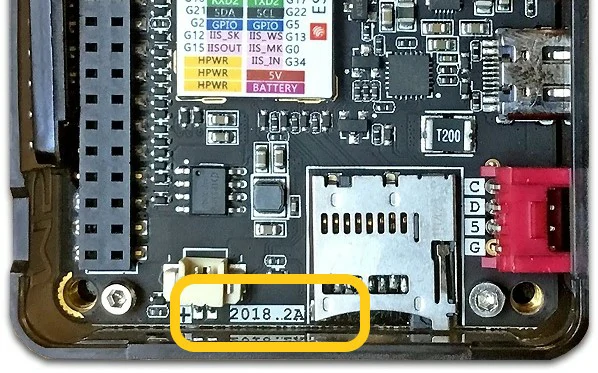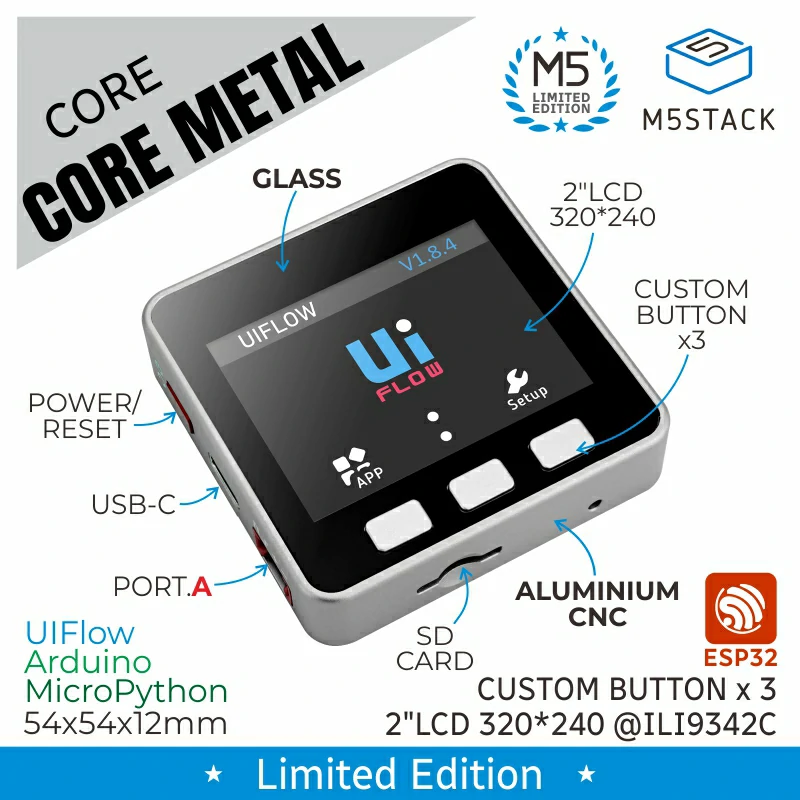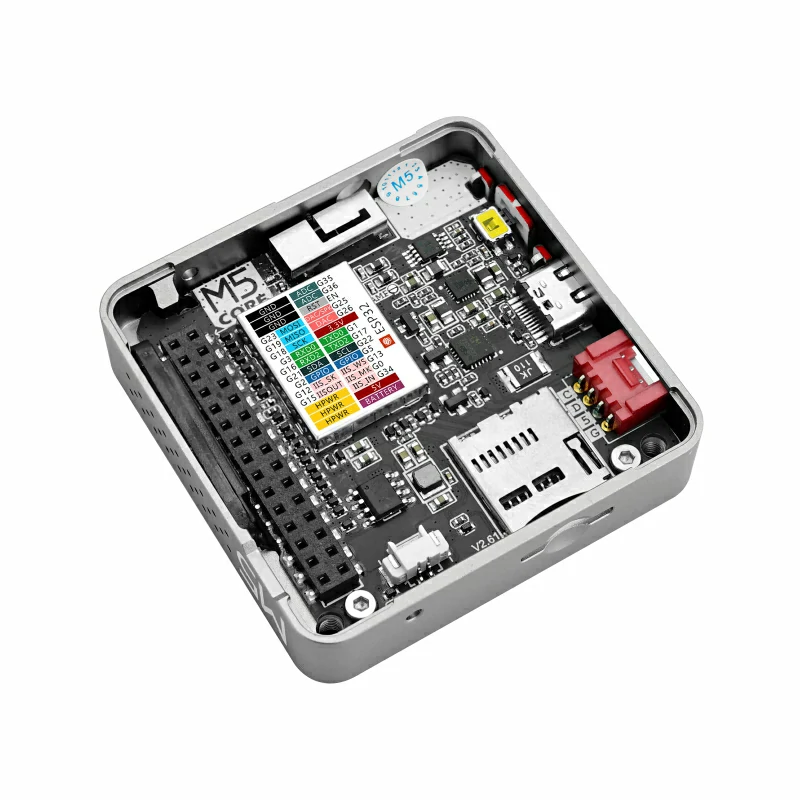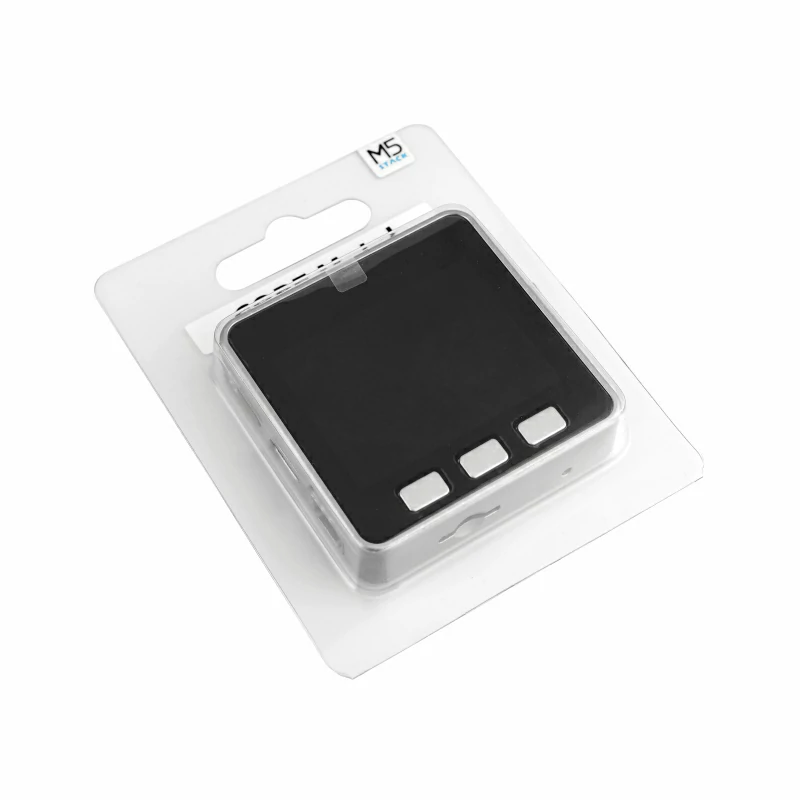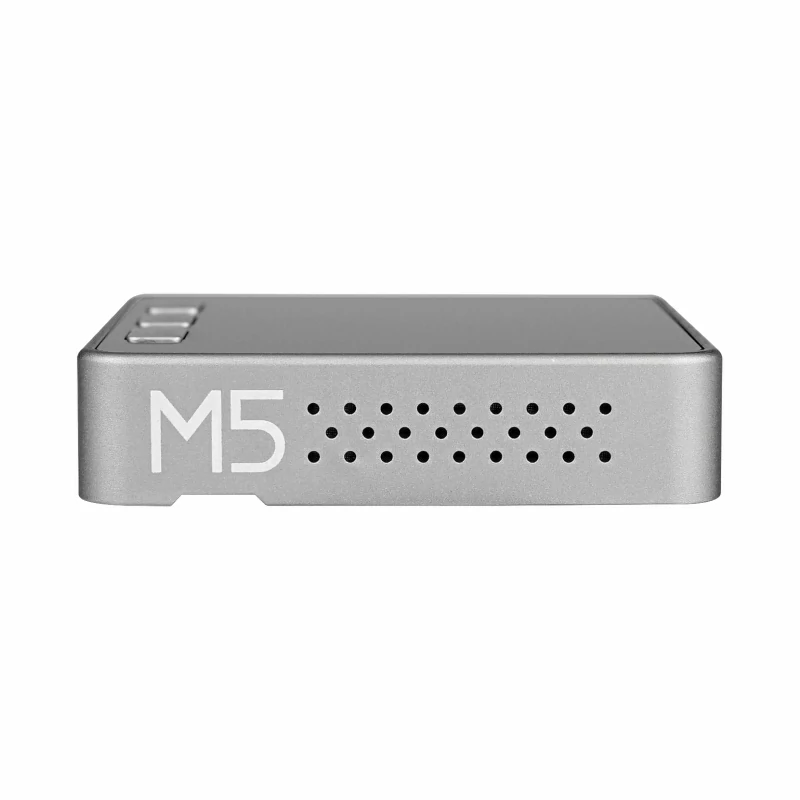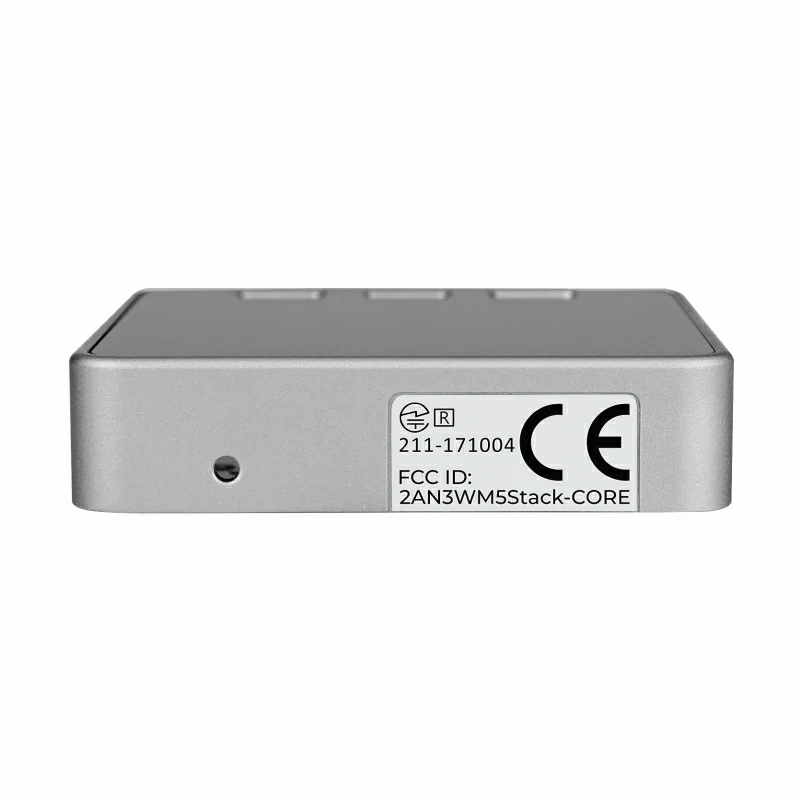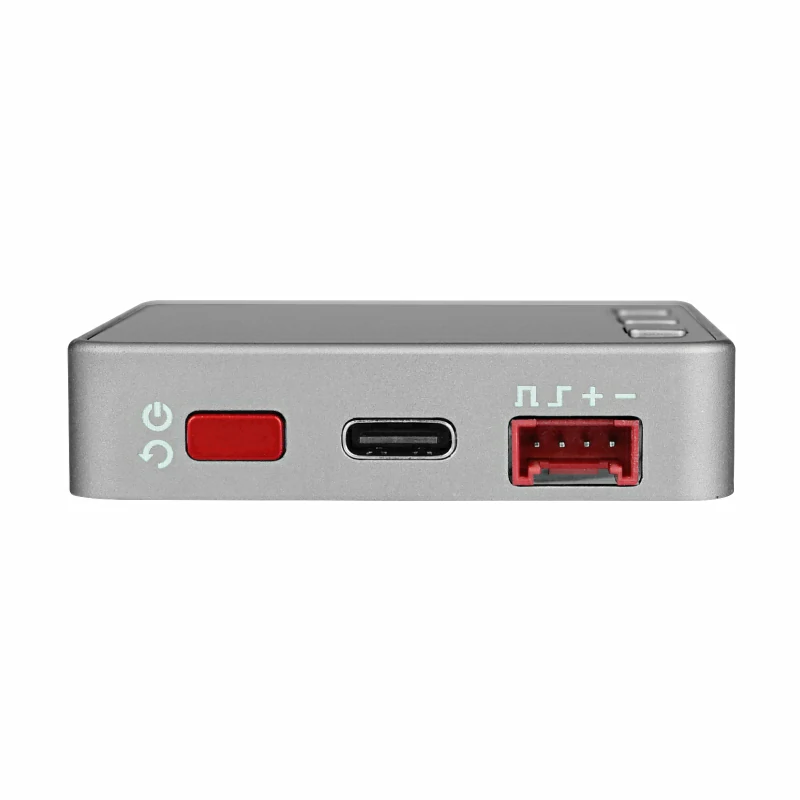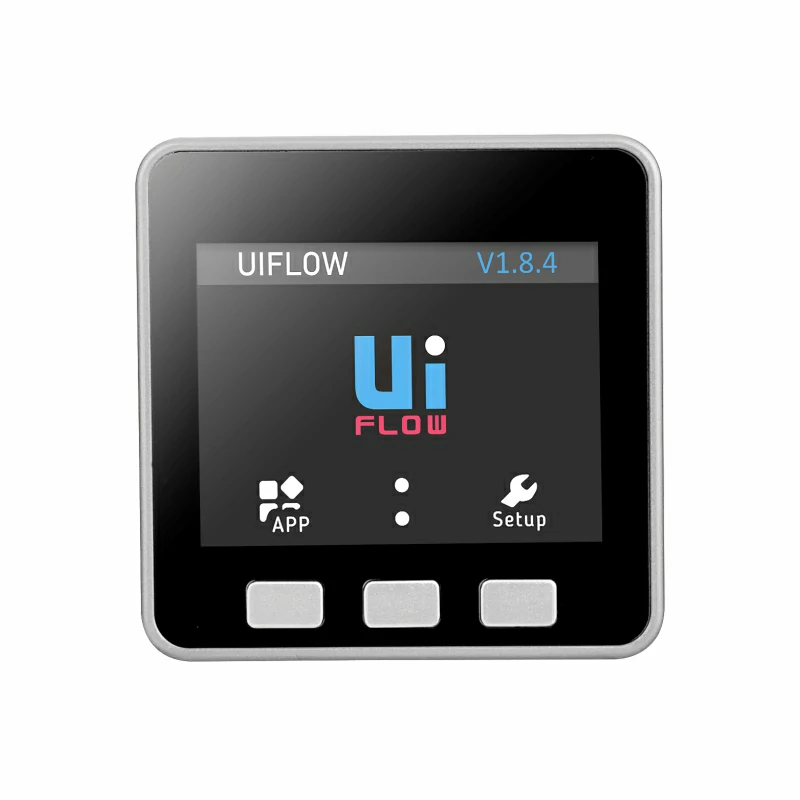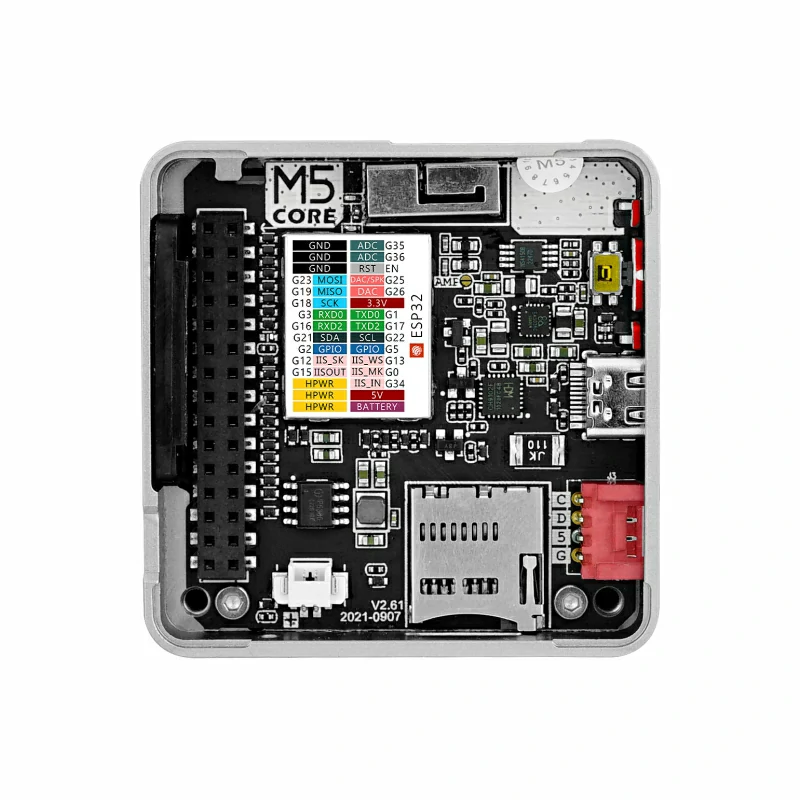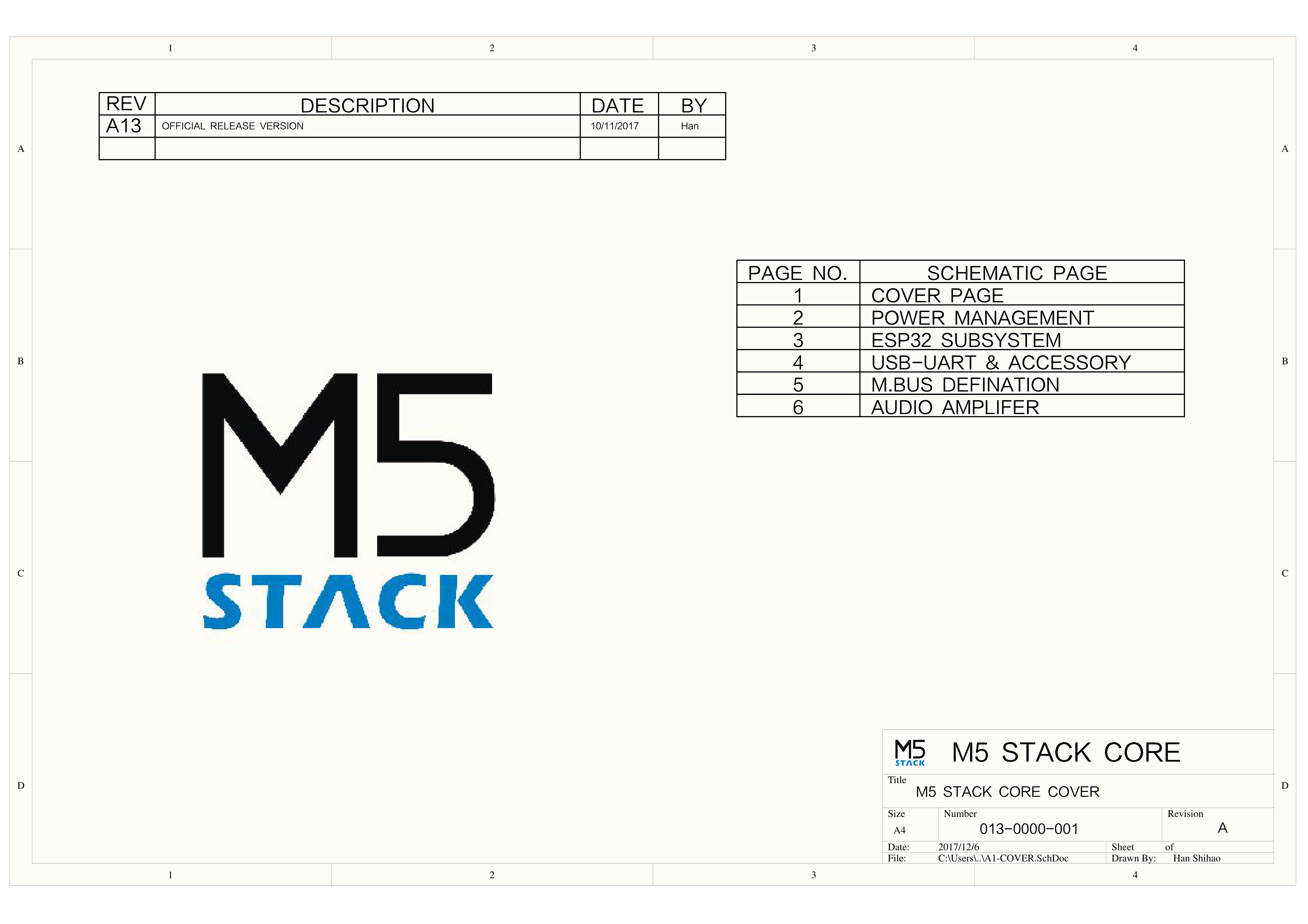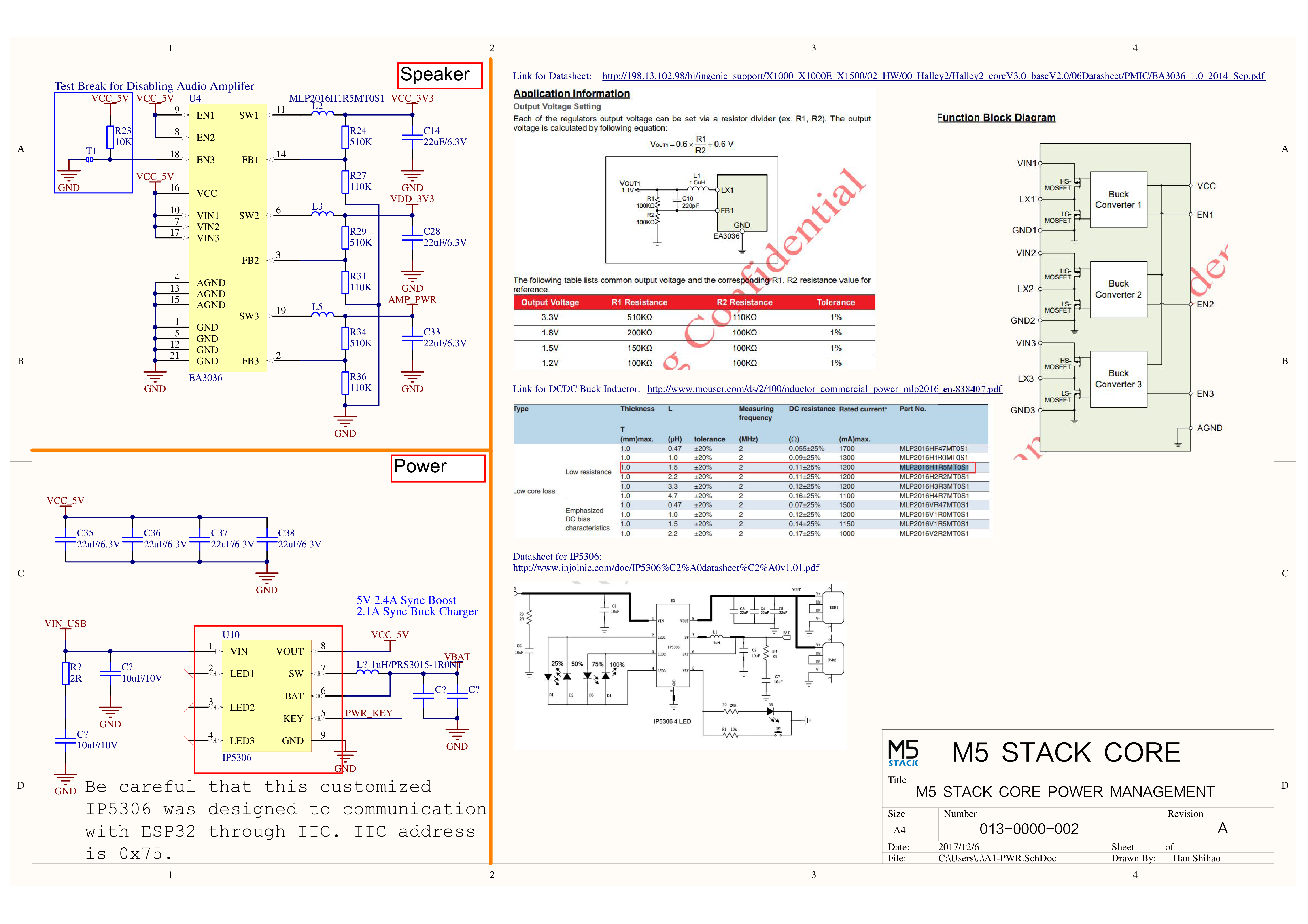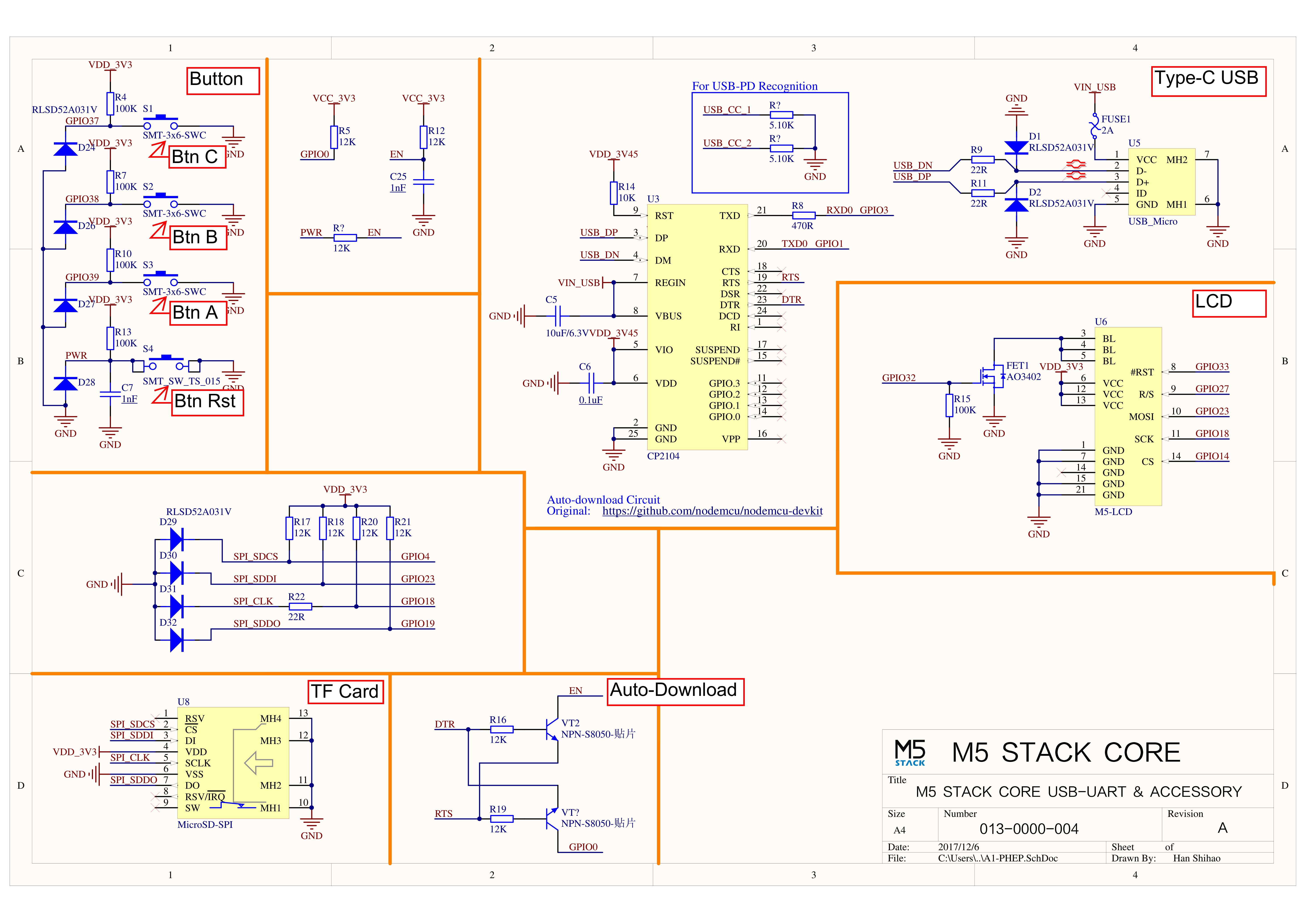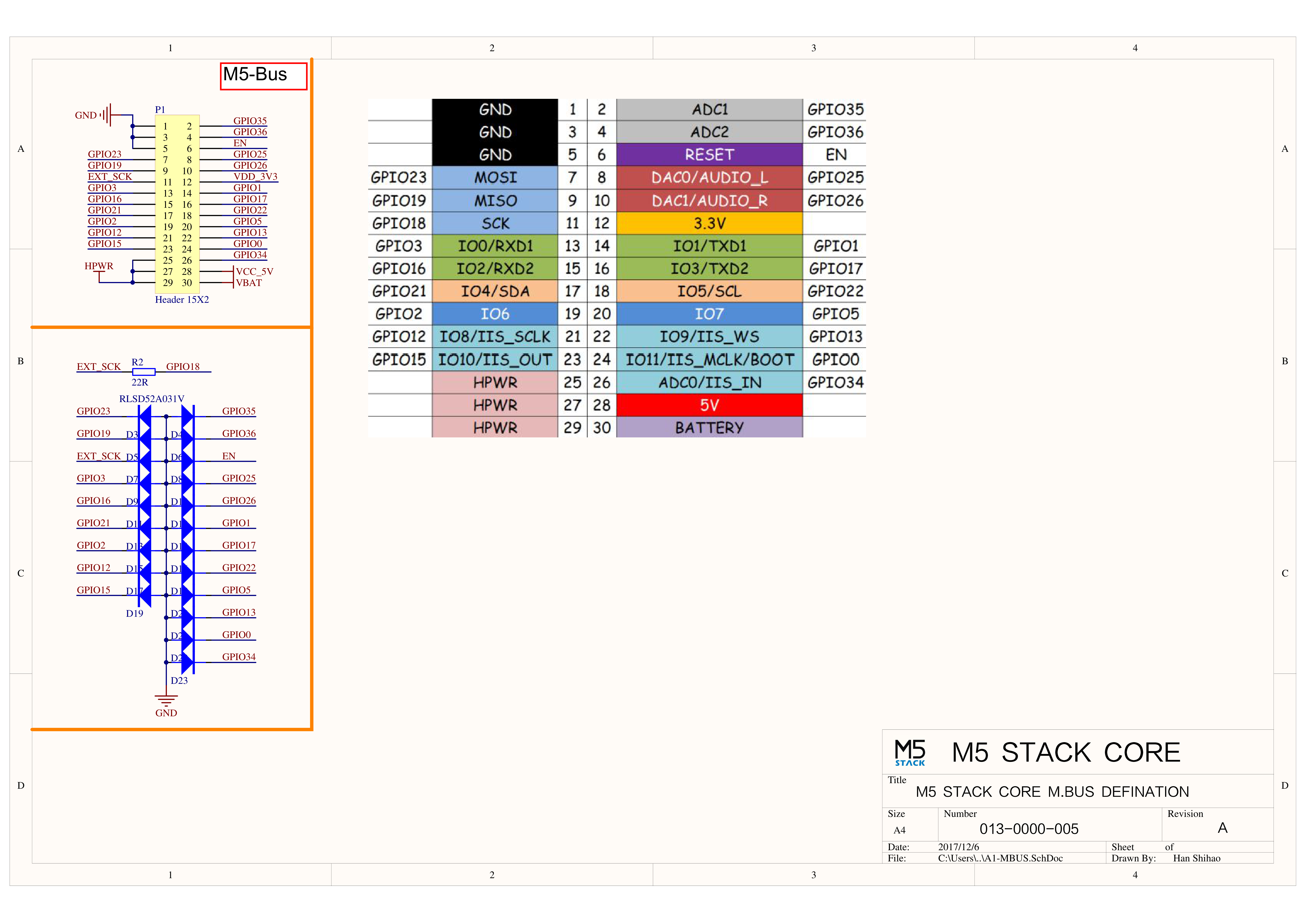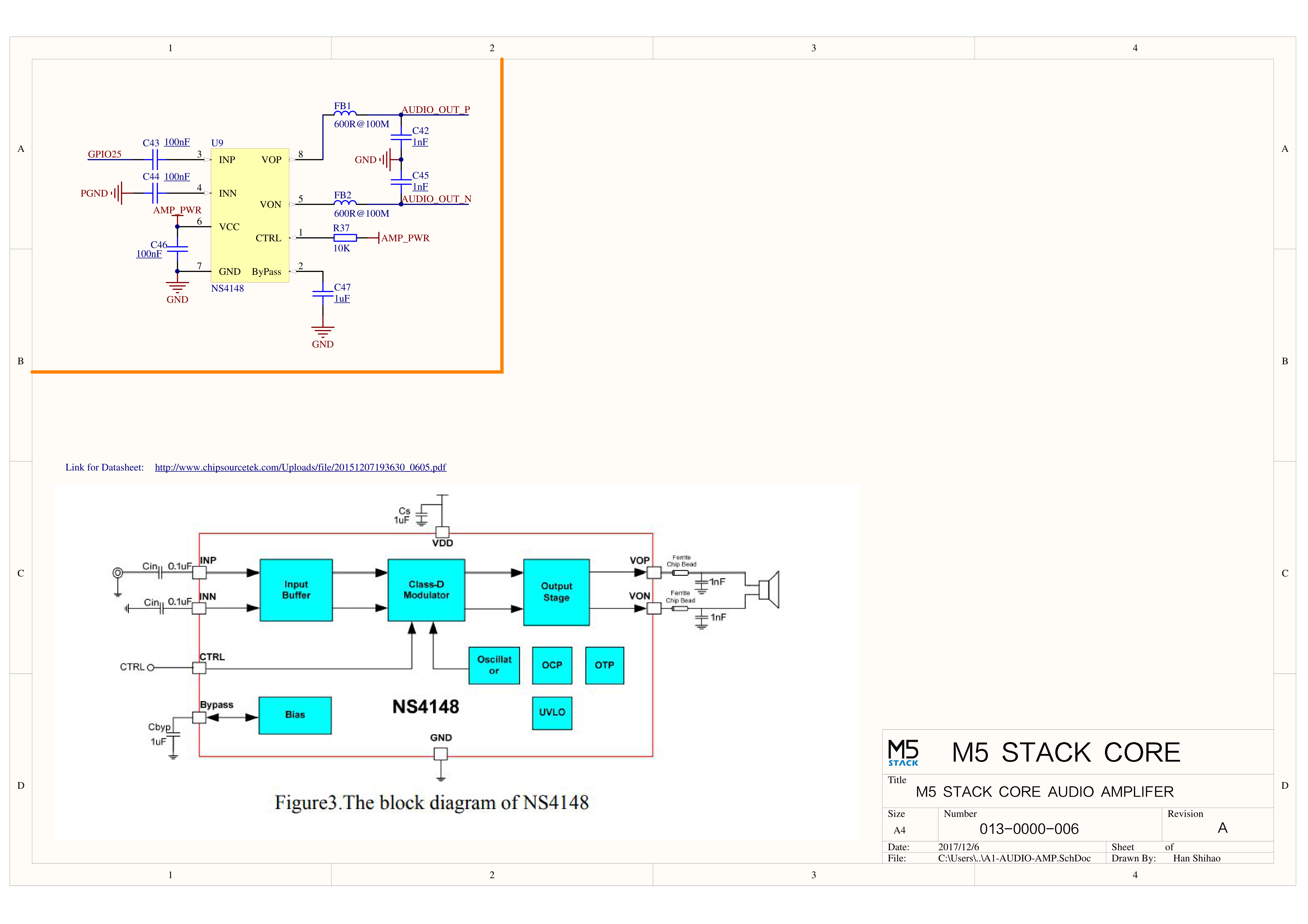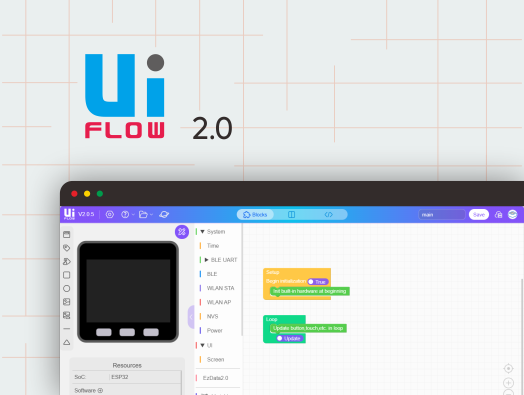SKU:C001-CNC
Description
Core Metal is a limited edition metal CNC commemorative version of the M5Stack Basic host. It uses the Espressif ESP32 chip, equipped with 2 low-power Xtensa® 32-bit LX6 microprocessors, with a main frequency of up to 240 MHz. It has an onboard 16 MB FLASH memory combination, integrated with a 2.0-inch full-color HD IPS display panel, speaker, TFCard slot, and other peripherals. The full-cover shell ensures circuit operation stability even in complex industrial application scenarios. The internal bus provides a variety of commonly used interface resources (ADC/DAC/I2C/UART/SPI, etc.), with a 15 x IO breakout on the bottom bus, offering strong expandability. It is suitable for various product prototype development, industrial control, and smart building application scenarios.
Tutorial
This tutorial will introduce you to controlling the Basic device through the UIFlow graphical programming platform
This tutorial will introduce you to controlling the Basic device through the UiFlow2 graphical programming platform
This tutorial will introduce you to programming the Basic device through the Arduino IDE
Features
- Developed based on ESP32
- 16M FLASH
- Integrated full-color HD IPS display panel and various hardware peripherals
- Rich resource interfaces, compatible with M5Stack stacking module system and sensor system, extremely expandable.
- Development Platform
- UiFlow1
- UiFlow2
- Arduino IDE
- ESP-IDF
- PlatformIO
Includes
Applications
- IoT Controller
- Maker DIY Projects
- Smart Home Control
Specifications
| Specification | Parameter |
|---|
| ESP32-D0WDQ6-V3 | 240MHz dual core, 600 DMIPS, 520KB SRAM, Wi-Fi |
| Flash | 16MB |
| Input Power | 5V @ 500mA |
| Interface | TypeC x1, I2C x1 |
| IO | G21, G22, G23, G19, G18, G3, G1, G16, G17, G2, G5, G25, G26, G35, G36 |
| Buttons | Physical buttons x 3 |
| LCD Screen | 2.0"@320 x 240 ILI9342C IPS panel, max brightness 853nit |
| Speaker | 1W-0928 |
| USB Chip | CH9102F |
| Antenna | 2.4G 3D antenna |
| Case Material | Aluminum alloy |
| Product Size | 54 x 54 x 18mm |
| Package Size | 95 x 65 x 25mm |
| Product Weight | 42g |
| Package Weight | 43.5g |
Learn
Power On/Off
Power On/Off Operation
Power On: Single click the red power button on the left
Power Off: Quickly double-click the red power button on the left
USB Power: By default, when USB powered, the device cannot be turned off
Antenna Signal Strength Explanation
Schematics
PinMap
LCD Screen & TF Card
LCD Pixels: 320x240
TF Card supports up to 16GB
| ESP32 Chip | GPIO23 | GPIO19 | GPIO18 | GPIO14 | GPIO27 | GPIO33 | GPIO32 | GPIO4 |
|---|
| ILI9342C | MOSI/MISO | / | CLK | CS | DC | RST | BL | |
| TF Card | MOSI | MISO | CLK | / | / | / | / | CS |
| ESP32 Chip | GPIO39 | GPIO38 | GPIO37 | GPIO25 |
|---|
| Button Pin | BUTTON A | BUTTON B | BUTTON C | |
| Speaker | / | / | / | Speaker Pin |
GROVE Interface A & IP5306
The power management chip (IP5306) is a custom I2C version, with an I2C address of 0x75. Click
here
to view the IP5306 register manual.
| ESP32 Chip | GPIO22 | GPIO21 | 5V | GND |
|---|
| GROVE A | SCL | SDA | 5V | GND |
| IP5306 | SCL | SDA | 5V | GND |
IP5306 Charging/Discharging, Voltage Parameters
| Charging | Discharging |
|---|
| 0.00 ~ 3.40V -> 0% | 4.20 ~ 4.07V -> 100% |
| 3.40 ~ 3.61V -> 25% | 4.07 ~ 3.81V -> 75% |
| 3.61 ~ 3.88V -> 50% | 3.81 ~ 3.55V -> 50% |
| 3.88 ~ 4.12V -> 75% | 3.55 ~ 3.33V -> 25% |
| 4.12 ~ / -> 100% | 3.33 ~ 0.00V -> 0% |
PORT
| PORT | PIN | Note: |
|---|
| PORT-A(Red) | G21/22 | I2C |
| PORT-B(Black) | G26/36 | DAC/ADC |
| PORT-C(Blue) | G16/17 | UART |
ESP32 ADC/DAC
| ADC1 | ADC2 | DAC1 | DAC2 |
|---|
| 8 Channels | 10 Channels | 2 Channels | 2 Channels |
| G32-39 | G0/2/4/12-15/25-27 | G25 | G26 |
HY2.0-4P
| HY2.0-4P | Black | Red | Yellow | White |
|---|
| PORT.A | GND | 5V | G21 | G22 |
| PORT.B | GND | 5V | G26 | G36 |
| PORT.C | GND | 5V | G16 | G17 |
M-BUS
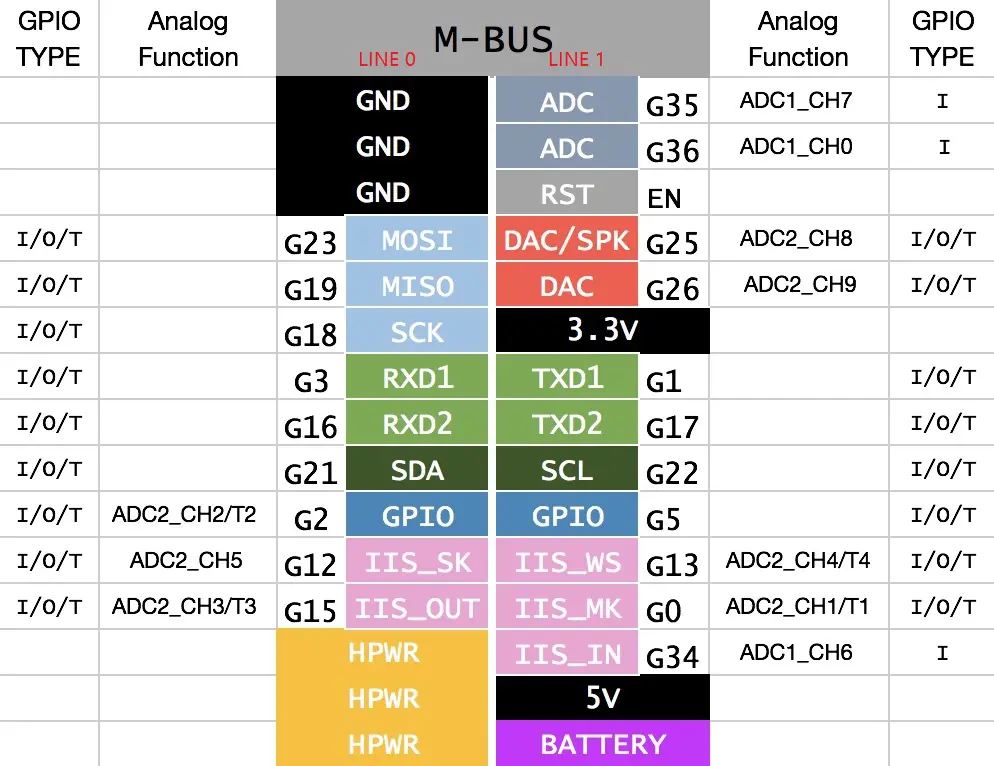
For more information on pin allocation and pin remapping, please refer to the
ESP32 datasheet
Model Size
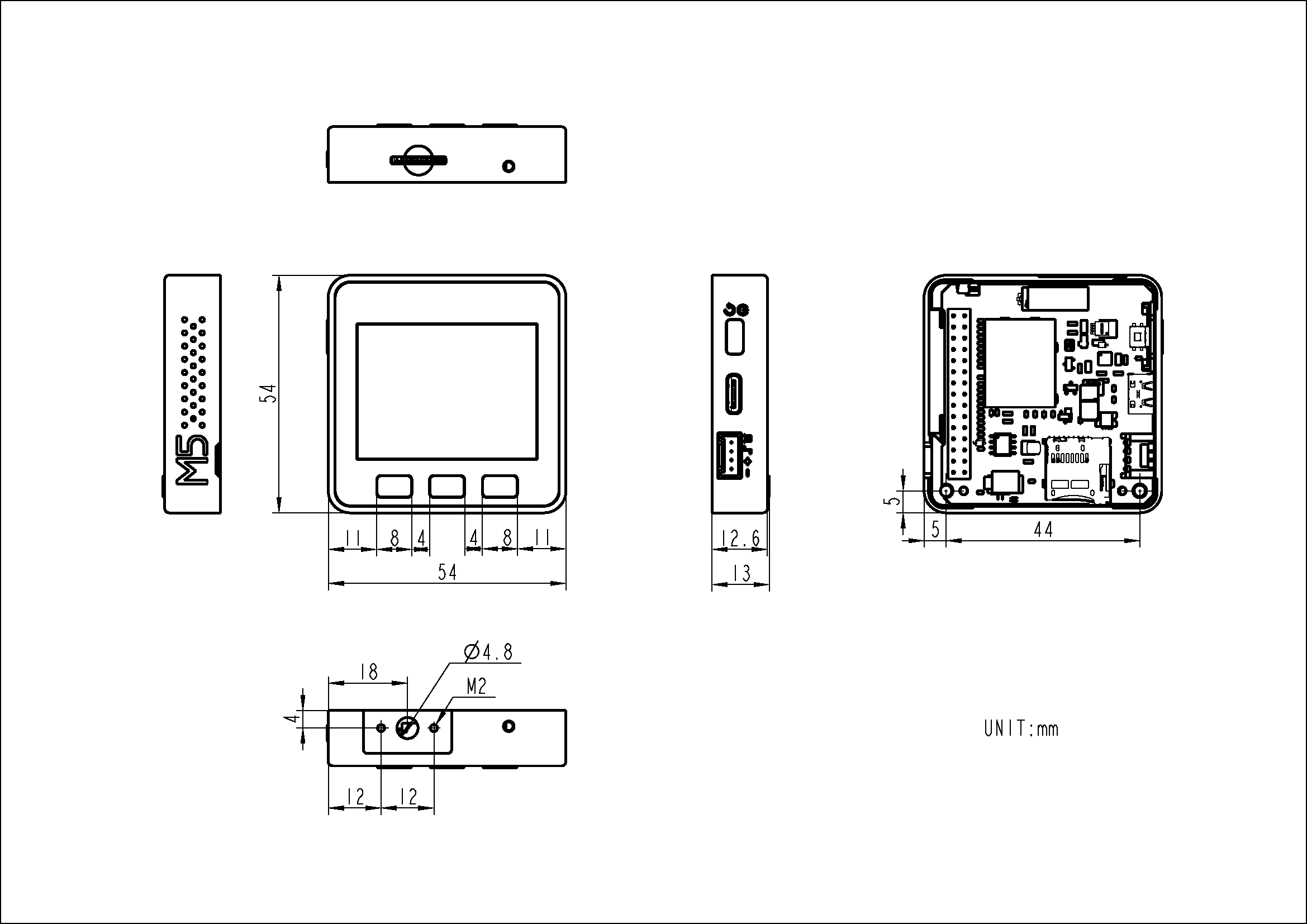
Datasheets
Softwares
Arduino
UiFlow1
UiFlow2
[env:m5stack-core]
platform = espressif32@6.3.2
board = m5stack-core-esp32
framework = arduino
upload_speed = 1500000
monitor_speed = 115200
build_flags =
-DCORE_DEBUG_LEVEL=5
lib_deps =
M5Unified=https://github.com/m5stack/M5Unified
USB Driver
Driver Download
Click the link below to download the driver for your operating system. There are currently two driver chip versions, CP34X (for CH9102) driver package. After extracting the package, select the installation package for your operating system's bit version for installation. (If you are unsure about the USB chip used in your device, you can install both drivers. CH9102_VCP_SER_MacOS v1.7 may show an error during installation, but the installation is actually complete, just ignore it.) If you encounter issues with downloading programs (timeout or Failed to write to target RAM), try reinstalling the device driver.
| Driver Name | Applicable Driver Chip | Download Link |
|---|
| CH9102_VCP_SER_Windows | CH9102 |
Download
|
| CH9102_VCP_SER_MacOS v1.7 | CH9102 |
Download
|
MacOS Port Selection
In MacOS, there may be two selectable ports, please choose the port named wchmodem when using.
Easyloader
| Easyloader | Download Link | Note |
|---|
| Core Metal Test Easyloader |
download
| / |
Video
Version Change
| Release Date | Product Changes | Notes |
|---|
| 2017.7 | First Release (Core1.4) | / |
| 2019.7 | TN screen changed to IPS screen (Core2.2) | Please upgrade your M5Stack library to the latest version (v0.2.8 or above) to solve screen color inversion issues |
| 2020.3 | Battery capacity changed from 150mAh to 110mAh (Core2.4) | / |
| 2020.6 | Flash size changed from 4MB to 16MB (Core2.5) | / |
| 2023.4 | Upgraded to v2.7 version | Screen changed to glass screen, clearer display, Grove port added boost function for stable 5.1v output, more stable with load; added battery power switch |
Note: Devices with 2018.2A PCB version do not support C2C (TypeC to TypeC) connection and PD power supply.
